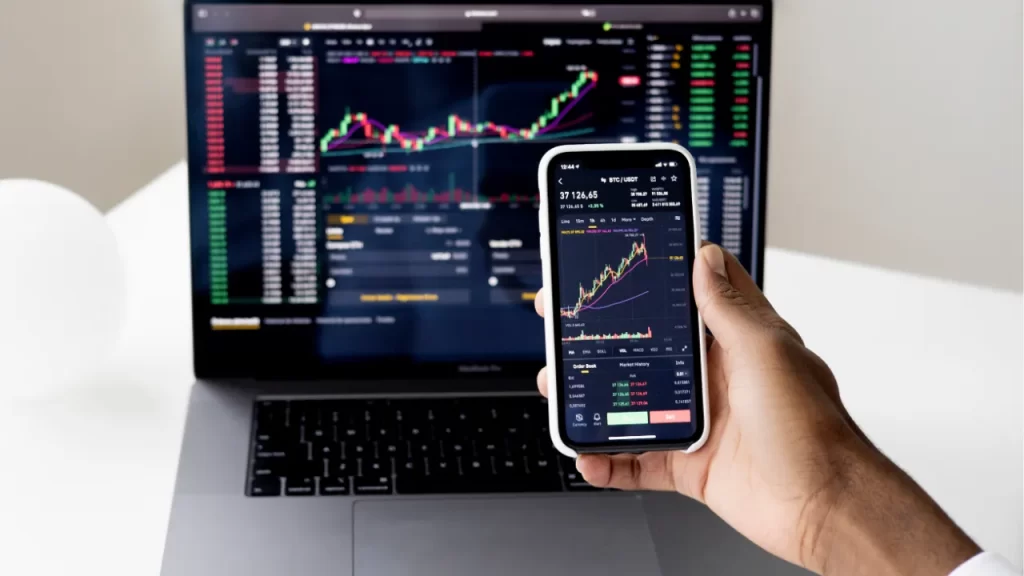CFD (Contract for Difference) trading offers traders flexibility in how they approach the markets.
Two of the most popular strategies are day trading and swing trading. While both involve speculating on price movements, they differ in execution, time commitment, and risk management.
This article explores the key differences between day trading and swing trading in CFDs, their advantages and disadvantages, and which strategy may be better suited for different types of traders.

Understanding Day Trading in CFDs
What is Day Trading?
Day trading involves opening and closing positions within the same trading day. Traders aim to capitalize on short-term price movements and avoid overnight risks.
Key Characteristics of Day Trading:
- Trades last from minutes to hours but are always closed before the market closes.
- Requires constant monitoring of price movements.
- Primarily relies on technical analysis and short-term indicators.
- Involves high trading volumes with small profit margins per trade.
Pros of Day Trading:
- No overnight risk since all positions are closed daily.
- Provides frequent trading opportunities.
- Allows traders to take advantage of short-term volatility.
Cons of Day Trading:
- Requires significant time and focus.
- High transaction costs due to frequent trades.
- Can be stressful due to rapid market fluctuations.

Understanding Swing Trading in CFDs
What is Swing Trading?
Swing trading involves holding CFD positions for several days to weeks, aiming to capture larger price movements within a trend.
Key Characteristics of Swing Trading:
- Trades last from a few days to several weeks.
- Less frequent trades compared to day trading.
- Uses a combination of technical and fundamental analysis.
- Tolerates short-term price fluctuations in favor of larger gains.
Pros of Swing Trading:
- Less time-intensive compared to day trading.
- Allows traders to capture larger price moves.
- Lower transaction costs due to fewer trades.
Cons of Swing Trading:
- Exposure to overnight and weekend risks.
- Requires patience and discipline.
- Can be affected by unexpected market events.

Key Differences Between Day Trading and Swing Trading
- Holding Period: Day trading involves holding positions for minutes to hours, while swing trading lasts for several days to weeks.
- Market Monitoring: Day trading requires full-time attention, whereas swing trading can be monitored periodically.
- Trade Frequency: Day traders execute multiple trades per day, while swing traders make fewer trades per week.
- Risk Exposure: Day traders avoid overnight risk by closing positions daily, whereas swing traders are exposed to overnight and weekend market fluctuations.
- Profit Potential: Day traders aim for small profits per trade with high volume, while swing traders target larger profits per trade with lower volume.
- Analysis Methods: Day traders mostly use technical analysis, whereas swing traders incorporate both technical and fundamental analysis.

Which Strategy is Better?
Day Trading is Better If:
- You have time to actively monitor the markets.
- You prefer short-term trading and quick decision-making.
- You can handle high stress and fast-paced environments.
Swing Trading is Better If:
- You have a full-time job and cannot monitor trades constantly.
- You prefer holding positions for longer and reducing trade frequency.
- You want to avoid the stress of rapid trading decisions.
Final Verdict
There is no one-size-fits-all answer. Day trading suits active, short-term traders, while swing trading is ideal for those who prefer a slower, more strategic approach.
Traders should choose based on their personality, risk tolerance, and time availability.
Conclusion
Both day trading and swing trading have their benefits and drawbacks.
Day trading provides quick profits but requires constant attention, while swing trading allows for larger moves but carries overnight risks.
The best approach is to test both strategies using a demo account and choose the one that aligns with your trading style and goals.






